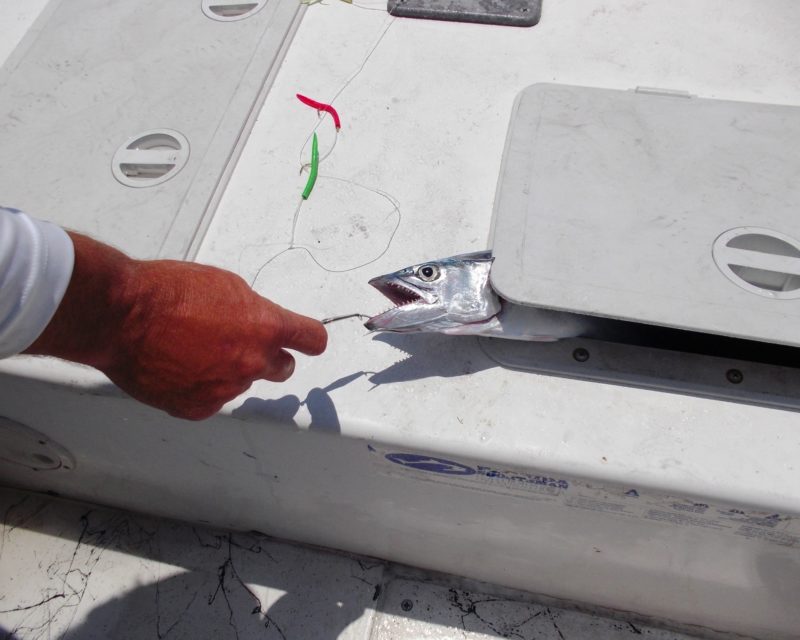
Slippery, sharp-toothed fish can be a danger when unhooking
Spanish mackerel are coated with a very slick slime and have razor-sharp teeth, which can be a dangerous combination. They are difficult to hold, and a single slip can put fingers in danger of a severe laceration. The slime may transmit germs or diseases to fishermen through open cuts, especially ones freshly made by a mackerel’s sharp teeth. The easier you can handle and unhook Spanish, the better. And guide Rennie Clark, Jr., has a great trick.
Clark uses his livewell as a fish box, but a fish box or cooler will serve the same purpose. Spanish mackerel are not usually netted or gaffed, but are flipped into the boat. Clark opens the lid on the fish box, flips a freshly caught Spanish into it and closes the lid.
Some Spanish will throw the hook once the tension on the line is released. For those that don’t, crack the lid open and use the leader to pull the Spanish into a corner, with just its head sticking out. Close the lid on the Spanish’s gill cover and apply enough pressure to hold it firmly. Now, you can remove the hook without the fish struggling and possibly surging forward and biting you. When the hook is removed, release the pressure on the lid. The fish will drop into the fish box and the lid can be closed.
Before putting the lure back out is a good time to grasp the leader lightly at the lure and slide your fingers up 6 inches or so to check for nicks and cuts. If there is one, cut the leader and retie.




